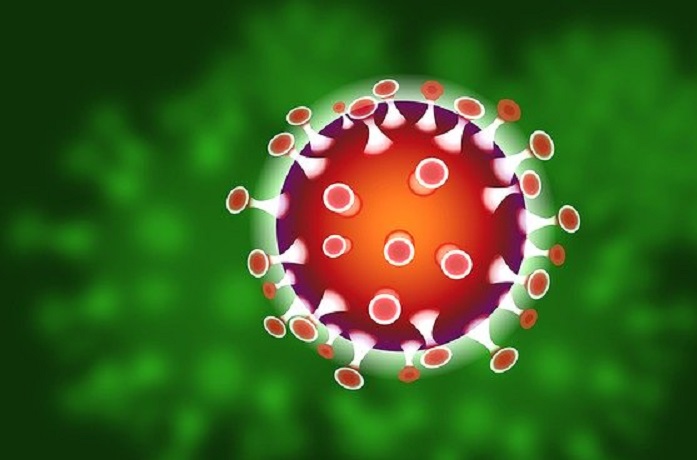Investigators from China detect SARS-CoV-2 RNA in stool samples of patients confirming the replication and release of the virus through the digestive system.
In 23.92 % of cases, the virus was detected in the stool even after viral clearance in the respiratory tract.
As rock climbers’ survival depends on climbing picks or spikes for mountaineering, so too do coronaviruses rely on spike proteins (transmembrane S-glycoproteins) to facilitate entry into human cells. It is these spikes that give the virus its crown-like appearance.
Spike proteins are able to latch onto a human cell membrane protein called angiotensin-converting enzyme 2 (ACE2), which ordinarily plays an important role in regulating cardiovascular and renal function.
Upon latching and fusion, the entire viral genome (RNA) is dumped into the high-jacked cell where host cell proteins trigger the synthesis of viral machinery that serves to replicate itself and other necessary viral proteins. New virions are assembled and released to infect other nearby cells with suitable ACE2 receptors.
Human airway ACE2 proteins are easy targets for SARS-CoV-2 virus present in coughing and sneezing droplets. Common respiratory symptoms include fever, dry cough, laboured breathing, and mild to severe pneumonia.
Patients may also experience diarrhea, nausea, vomiting and abdominal discomfort before the onset of typical respiratory symptoms.
In former SARS studies, researchers were able to detect viral content in stool samples.
In two new papers, published in Gastroenterology, investigators from China confirm the presence of SARS-CoV-2 RNA in stool samples of coronavirus patients.
Researchers from Wuhan China observed that out of 73 SARS-CoV-2 infected hospitalized patients, 53.42 % of them tested positive for SARS-CoV-2 RNA in stool samples. The duration of positive stool ranged from one to 12 days.
An endoscopy performed on one of the patients confirmed the presence of ACE2 proteins in gastrointestinal epithelial cells further supporting evidence for the assembly of new virions that are released through the gastrointestinal tract.
Notably the first COVID-19 (illness of SARS-CoV-2 virus) patient in the United States reported a two-day history of nausea and vomiting. Loose stools on hospital day two tested positive for viral RNA.
Moreover, recent bioinformatics analysis has revealed that ACE2 proteins are not only highly expressed in the lungs, but also the gastrointestinal system. The exact mechanism of gastrointestinal symptoms remains not well understood.
In accordance with current China Disease Control and Prevention guidelines, transmission-based precautions for hospitalized patients are maintained until the patient obtains negative results for SARS-CoV-2 from at least two sequential respiratory tract specimens collected a minimum of 24 hours apart.
Given that 23.29 % of the patients demonstrated positive stool samples even after viral clearance in the respiratory tract, the researchers strongly recommend the routine testing of SARS-CoV-2 in feces of infected or suspected individuals. Furthermore, they assert that patients should not be discharged from the hospital if feces test positive for the virus.
Another concern is the potential for viral spread from fecal-oral contamination. Prevention strategies such as better bathroom hygiene habits should be taken into consideration to prevent spread.
Clinicians should be alert to promptly identify patients with initial gastrointestinal symptoms which may lead to an earlier diagnosis, isolation, and intervention.
Written by Maria-Elena Bernal
References:
- AmerGastroAssn. (n.d.). GI symptoms and potential fecal transmission in coronavirus patients. Retrieved from https://www.eurekalert.org/pub_releases/2020-03/aga-gsa030520.php
- Gu J, Han B, Wang J, COVID-19: Gastrointestinal manifestations and potential fecal-oral transmission, Gastroenterology (2020).
- Xiao F, Tang M, Zheng X, Liu Y, Li X, Shan H, Evidence for gastrointestinal infection of SARS-CoV-2, Gastroenterology (2020), doi: https://doi.org/10.1053/j.gastro.2020.02.055
- Chris, Thomas, & C., M. (2012, March 20). Angiotensin-Converting Enzyme 2 (ACE2) Is a Key Modulator of the Renin Angiotensin System in Health and Disease. Retrieved from https://www.hindawi.com/journals/ijpep/2012/256294/
Image by iXimus from Pixabay



